Be advised that Chilean alfajores have their own particularities. They’ve found their way into this unusual article at El Invitado de Invierno, because it not only includes a recipe, but also a film review and an interview with its director, Maite Alberdi. Three for the price of one.
First of all, please learn to properly pronounce alfajor here. It’s essential.
Chilean alfajores differ from the Argentinian ones, more known in Spain, in that the cookies (known as hojarascas in Chile) are lighter, similar to crackers, and sugar-free. They’re cut thinner and as baking powder is used, they expand in the oven and end up having a somewhat flaky texture. But thery’re equally filled with gooey dulce de leche (or manjar, as for the Chilean goes).
How come I’ve prepared Chilean alfajores? It happens that I was recently reached by the guys at PBS, who asked me if I was interested in watching a Chilean documentary called Tea Time, and in preparing some typical Chilean sweet. I of course jumped to the occasion: what a great excuse for preparing alfajores, ahem. Seize the day.
The documentary focuses on a group of elderly ladies, old school friends that have been gathering for tea once a month for the past 60 years. These ladies always gather around a wonderfully served tea table, just like any Spanish abuela would serve, with its china, its trays brimming with sweets and tarts and a wealth of doilies. While having tea they talk rather shamelessly about present and past.
You can watch the documentary at this link from 28th July to 26th August. I strongly recommend it because it is charming and touching. And whatever the case it is a good excuse to try your hand at Chilean alfajores. It is very beautifully filmed as if the camera was one of those ladies that see the end of their world and their life with an appealing humor. And always, undoubtedly, enjoying the time spent together after so many years of tea times.
I leave you to the alfajores now:
- 2 cups (230g) all-purpose flour
- 1 tsp baking powder
- 2 tbsp (60g) softened butter
- 1½ tsp vinegar
- 3 eggs
- Dulce de leche for filling
- Sieve the flour along with the baking powder into a bowl.
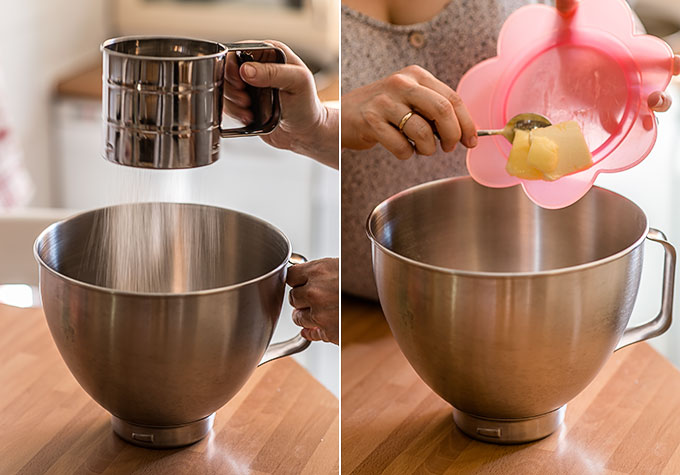
- Add the softened butter and mix well. Add the vinegar and mix again; this can be done by hand or on a stand mixer with the paddle attachment. We'll obtain a crumbly mixture.
- Then add the eggs and mix to homogenize. The dough should hardly stick to your fingers; if it does we'll add some more flour.
- Wrap the dough in a piece of plastic film and leave to rest for at least 30 minutes, so that the gluten can relax.
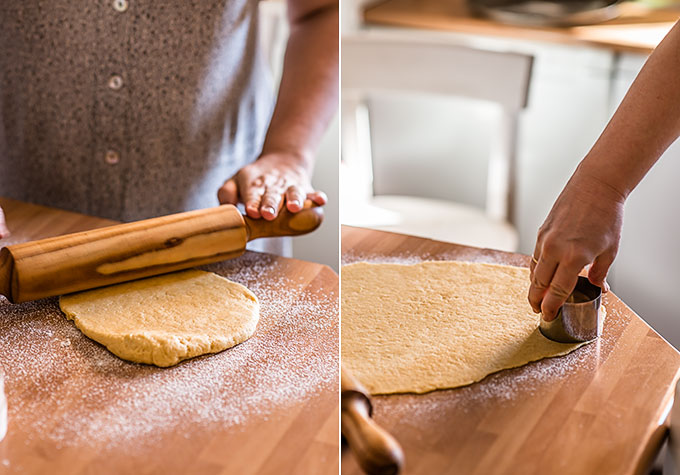
- Place the dough on a lightly floured counter and roll it with a rolling pin until very thin. Cut 2 inches (5cm) circles with a cookie cutter.
- Place the cookies on an oven tray, pierce them with a fork so that they don't expand in excess and bake the cookies 10-12 minutes in an oven preheated to 180º (no convection).
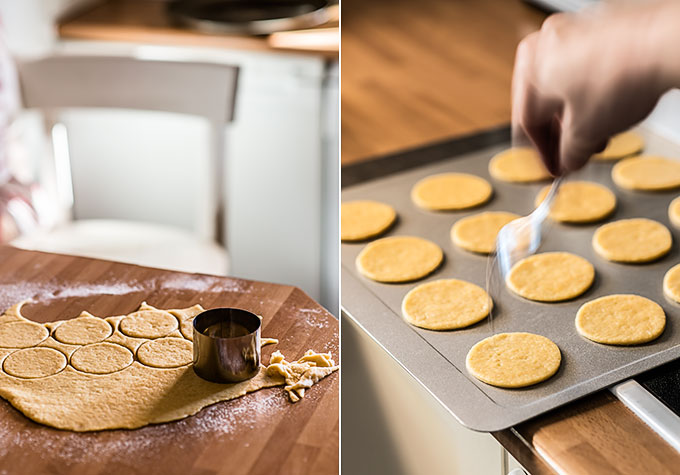
- Take them out to cool on a wire rack.
- When the cookies are cool spread in teaspoon of dulce de leche on half the cookies and sandwiched them with the other half. There you have the Chilean alfajores.
Let me introduce you to Maite Alberdi, director of Tea Time and grandaughter of one of the protagonists:
How did you think of filming your grandmother and friends’ monthly gatherings? What drew your attention to them?
- I found interesting how different they were among them. They were friends but they had lived very different lives and they had different personalities that made me wonder why they were friends. However after spending 60 years gathering once a month they had shared their lives and experience; I found that your friends are not the ones that resemble you the most, but the ones that have shared relevant experiences with you.
Did you have any movie as inspiration? Who are your favorite directors?
- Mi favorite director is Nicolas Philibert for the way he observes the daily life, because he can turn minimal stories and simple happenings into something transcendent.
I love how naturally serious matters like death or infidelity are discussed among the friends; at a certain moment they are posed the question if they’d prefer to widowed before knowing about their husbands infidelity, only while quitely nibbling sandwiches with an innocent air… Do you think women talk about matters that men never even mention when they’re together?
- I definitely believe that women and men interrelate among them in very different ways; I have often wondered about it while filming the documentary. I’ve considered if I would have been able to do the same with men and I’ve come to the conclusion that it wouldn’t have been possible. Men gather to do things, for group activities and they start talking from that. But they mainly seek other friends’ company to do things. On the contrary women need to talk and in general around some table, discussing deep issues sometimes in a frivolous manner, but that’s how their relationship works. Serious matters are not necessarily treated in a serious way.
When I watched the documentary I thought that those grandmothers with their worries, stories and even prejudices where entirely understandable in Spain, do you think the common history between Spain and Chile has something to do with it or that the documentary can be understood anywhere?
- I believe the story is quite global and transverse to any culture and background. Probably there is a connection between Spain and Chile that helps you better understand the role of women in a conservative society, along with the class gap, but I think that these are women, grandmothers, spouses that speak of friendship, love, old age and death, and these are utterly universal issues that can clearly be related to and understood anywhere in the world.
Is it real everything that happens? Did María Teresa really die during the shooting? Her farewell letter is really moving.
- Yes, everything is absolutely real. María Teresa, my own grandmother, died at the end of the shooting and the day depicted in the movie as the last was indeed the last day all the friends met.
How did you manage for the camera to act as one member more of the group of friends, completely immersed in the group?
- As I was the granddaughter of one of them they relied on me completely, furthermore they quickly got used to the camera and the team because all they wanted was to carry on with their rite as usual, no matter who was around. Therefore we soon became invisible, almost part of the furniture, as if we didn’t exist for them.
Being that this blog is a foodie and recipe blog, I would like to take advantage of that and ask you what kind of sweet dishes or recipes can never be missed in a Chilean tea?
- At the Chilean tea time you always serve rolls with avocado (pan con palta), lemon pie is a classic, also cakes and particularly fruit cakes with pastry cream and fresh fruit, called tartaletas.
And to finish with the culinary questions, which one is the Chilean savory dish that can’t be missed when in Chile?
- Very difficult to choose! Undoubtedly my favorite is the corn pie (pastel de choclo) with Chilean salad. Corn is very often used in the Chilean cuisine, I think it’s a good choice to try, because although it’s very typical it can be prepared almost anywhere. The Chilean salad is just a mixture of tomatos, onion and a bit of green chilli.
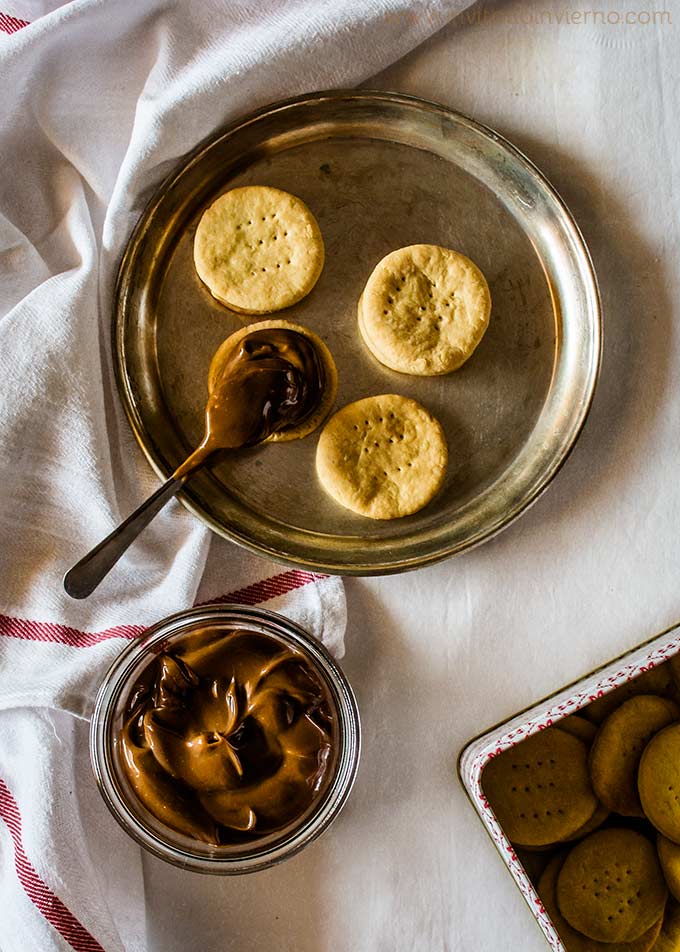
I don’t know if Chileans will approve these alfajores as I believe they’ve come out a bit too thick. But please bear with me, as it’s the first time I’ve made alfajores chilenos…
These delicious cookies are a breeze to make and they’re a great counterpoint to the gooey dulce de leche of the filling; being sugar-free, thin and light the resulting sandwiched cookies are not cloying. Nor do they require a long baking time therefore they can be prepared even in the middle of the summer. Give Chilean alfajores a try and get a taste of Chile. You won’t regret it.
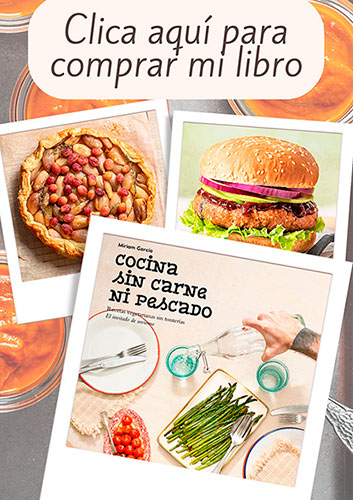
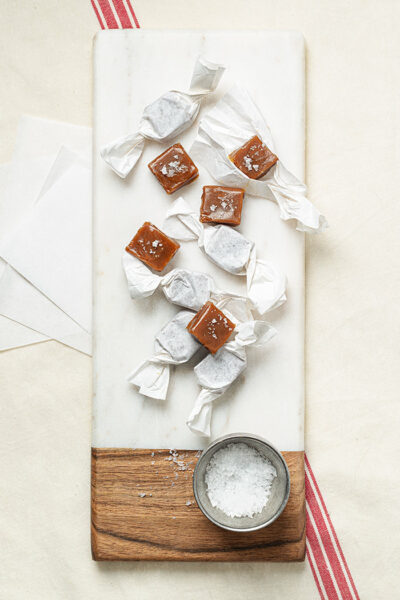

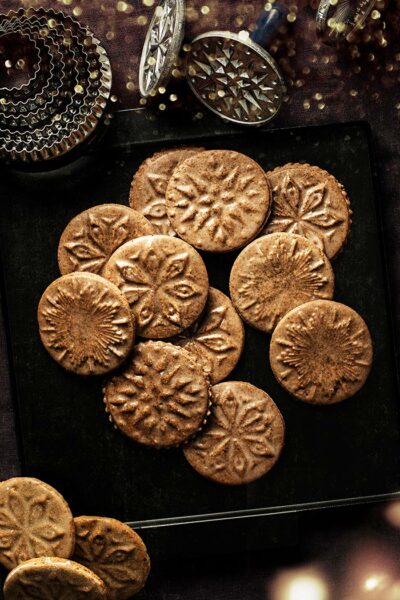
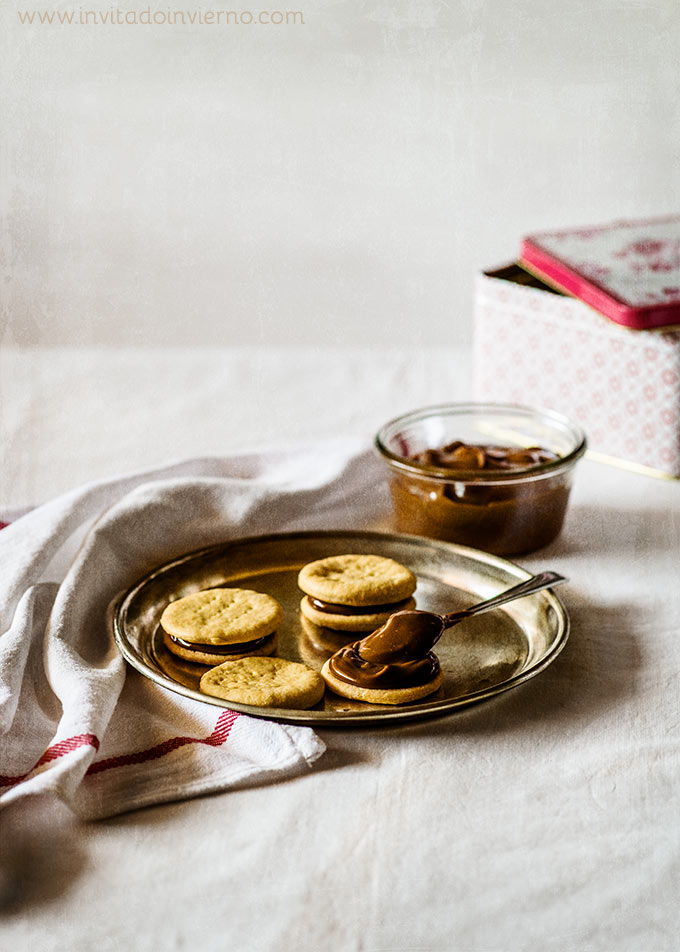
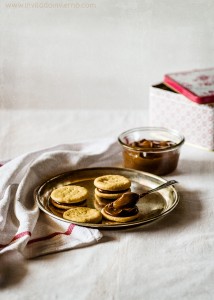

Yo pienso que este postre es muy simple y delicioso. Me gustó cómo fue fácil de hacer. Yo hice para mi madre y mi hermana y los dos les gustan también.
Me alegro mucho, muchas gracias Shelby por venir a contármelo ;).